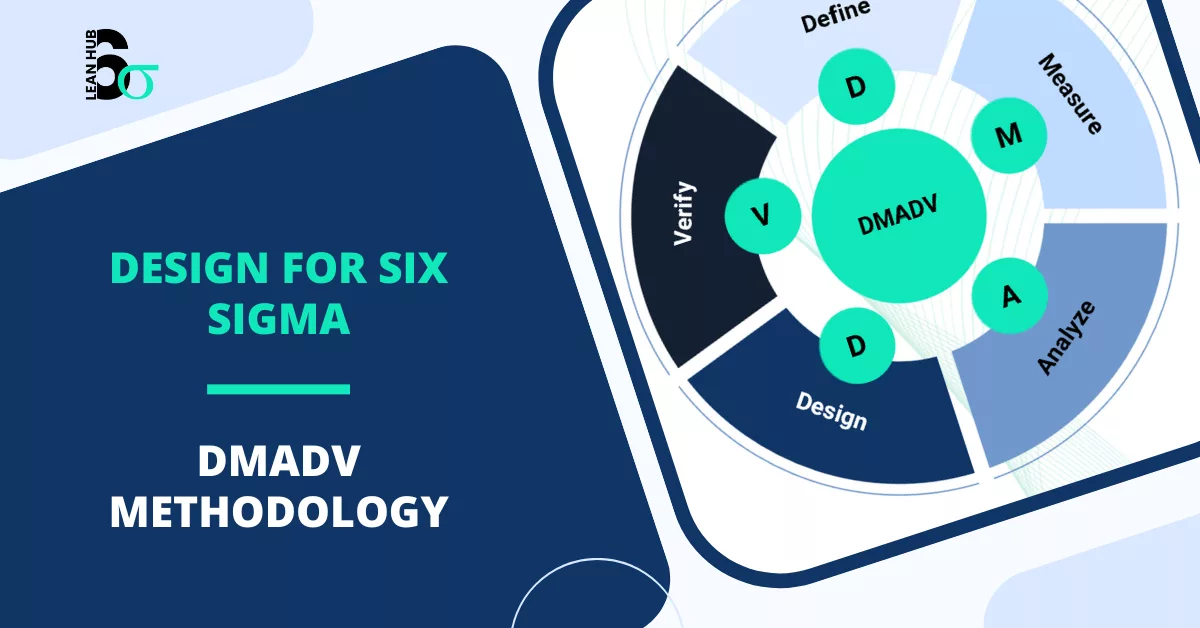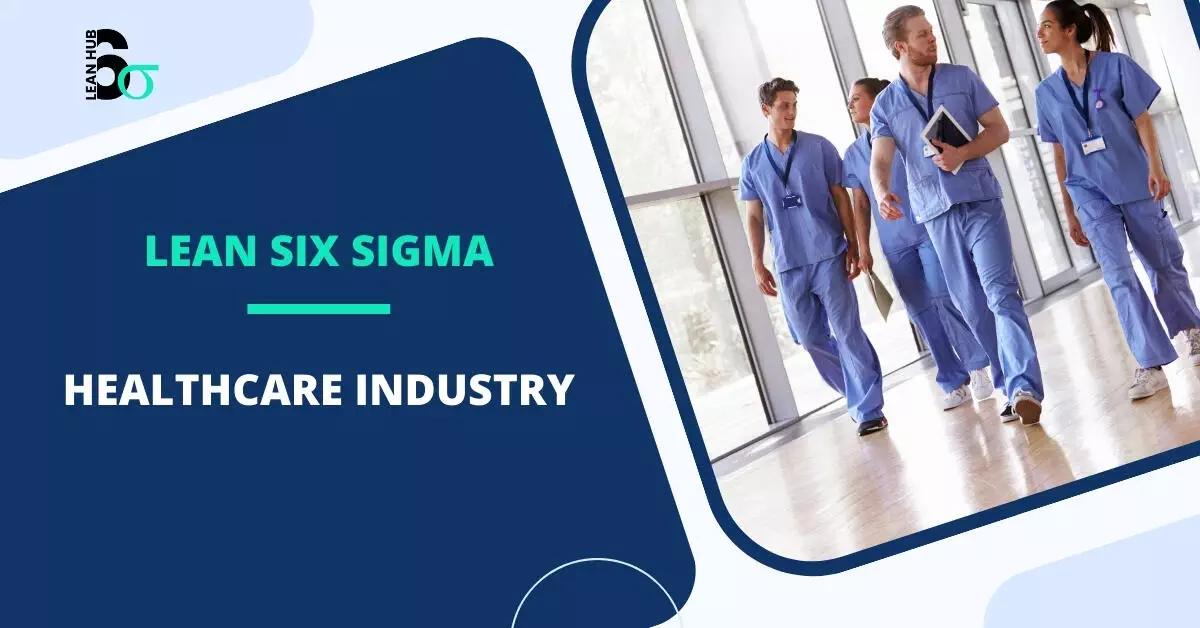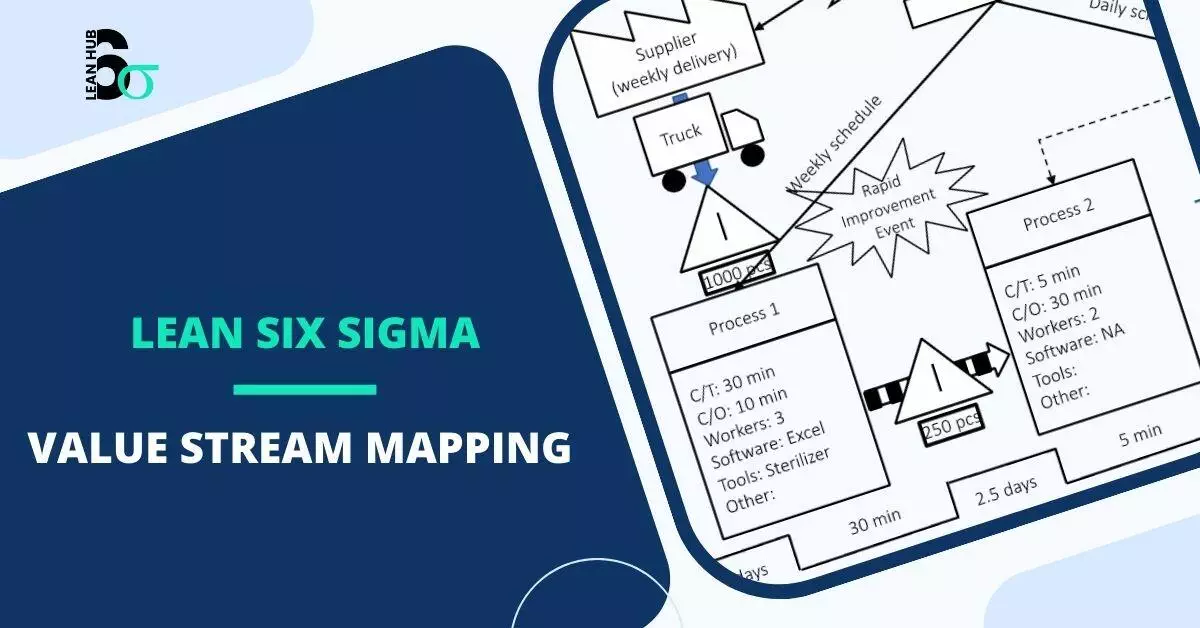By Lean 6 Sigma Hub – Bridging Strategy and Execution Through Continuous Improvement
Introduction: Defining the Power of Lean Six Sigma
If you’ve ever heard terms like DMAIC, waste elimination, or process optimization, chances are you’ve encountered Lean Six Sigma. But what exactly is the Lean Six Sigma methodology, and why is it such a game-changer across industries?
At Lean 6 Sigma Hub, we define Lean Six Sigma as a structured, data-driven approach to solving problems and improving business processes. It blends two globally recognized disciplines—Lean and Six Sigma—to help organizations improve performance, reduce costs, and deliver consistent, high-quality outcomes.
The Two Pillars: Lean + Six Sigma
What Is Lean?
Lean focuses on maximizing customer value by eliminating waste. Originating from the Toyota Production System, Lean encourages organizations to do more with less by:
- Streamlining workflows
- Removing non-value-adding steps
- Creating smooth, flow-based systems
Common Lean tools include:
- Value Stream Mapping (VSM)
- 5S Workplace Organization
- Kaizen (Continuous Improvement)
- TIMWOODS (Eight Wastes)
What Is Six Sigma?
Six Sigma focuses on reducing process variation and improving process capability. Rooted in statistical analysis, it aims to achieve near-perfect quality—typically 3.4 defects per million opportunities (DPMO).
Six Sigma tools and techniques include:
- DMAIC methodology
- Statistical Process Control (SPC)
- Cause and Effect Diagrams
- Design of Experiments (DOE)
The Synergy: What Makes Lean Six Sigma Unique?
Lean and Six Sigma are powerful on their own, but together, they form a holistic improvement system that addresses:
- Speed (Lean)
- Quality (Six Sigma)
- Cost (Both)
While Lean eliminates delays and inefficiencies, Six Sigma ensures that processes are stable and deliver defect-free outputs. This combination results in faster, better, and more reliable performance across the enterprise.
Core of the Methodology: The DMAIC Framework
The backbone of Lean Six Sigma is the DMAIC cycle—a five-phase problem-solving approach used to improve existing processes:
1. Define
Identify the problem, set objectives, and define customer requirements (CTQs – Critical to Quality).
Tools: Project Charter, SIPOC, Voice of the Customer (VOC)
2. Measure
Quantify the problem and current process performance.
Tools: Data Collection Plan, Process Mapping, Measurement System Analysis (MSA)
3. Analyze
Identify root causes of the problem using data-driven insights.
Tools: Pareto Charts, Fishbone Diagram, Hypothesis Testing
4. Improve
Develop and implement solutions to address root causes.
Tools: Brainstorming, Poka-Yoke (Error-Proofing), Design of Experiments
5. Control
Sustain improvements with controls and standard operating procedures.
Tools: Control Charts, Control Plans, Process Audits
Applications Across Industries
Lean Six Sigma is not just for manufacturing. It’s now used across:
- Healthcare (reducing patient wait times)
- Finance (streamlining loan approvals)
- IT & Software (reducing defects and bugs)
- Public Sector (improving citizen services)
- Logistics & Retail (improving inventory accuracy)
At Lean 6 Sigma Hub, we specialize in industry-relevant training with examples like our Jv’s Pizza simulation—making concepts relatable, practical, and fun to learn.
Certification Levels in Lean Six Sigma
Lean Six Sigma follows a belt-based certification system similar to martial arts. Each level represents increasing depth and responsibility:
| Belt Level | Role and Focus |
|---|---|
| White Belt | Awareness and basic understanding |
| Yellow Belt | Process participation and basic improvement |
| Green Belt | Project execution and data analysis |
| Black Belt | Project leadership and problem-solving expertise |
| Master Black Belt | Strategy, governance, and coaching |
Why Lean Six Sigma Matters in 2025
In today’s fast-moving, competitive world, businesses must:
- Eliminate inefficiencies
- Deliver consistent customer value
- Drive decisions with data
That’s where Lean Six Sigma shines. It provides a repeatable framework to identify problems, fix them, and prevent them from recurring—using facts, not guesswork.
Modern organizations are now integrating Lean Six Sigma with Agile, Digital Transformation, and ESG priorities to stay ahead.
Final Thoughts: A Methodology That Scales With You
Whether you’re improving one process or transforming an entire enterprise, Lean Six Sigma offers a scalable, structured approach to make change stick.
At Lean 6 Sigma Hub, we don’t just teach Lean Six Sigma—we modernize it for real-world relevance. Our certifications, training simulations, and proprietary frameworks help individuals and organizations make improvement not just a project, but a way of thinking.
Learn With Us
✅ Enroll in our White, Yellow, Green, or Black Belt certifications
✅ Join our simulated pizza delivery case study for hands-on learning
✅ Discover our enterprise consulting and coaching programs
👉 Explore more at Lean6SigmaHub.com – where continuous improvement becomes your competitive edge.
By Lean 6 Sigma Hub – Bridging Strategy and Execution Through Continuous Improvement
Introduction: Defining the Power of Lean Six Sigma
If you’ve ever heard terms like DMAIC, waste elimination, or process optimization, chances are you’ve encountered Lean Six Sigma. But what exactly is the Lean Six Sigma methodology, and why is it such a game-changer across industries?
At Lean 6 Sigma Hub, we define Lean Six Sigma as a structured, data-driven approach to solving problems and improving business processes. It blends two globally recognized disciplines—Lean and Six Sigma—to help organizations improve performance, reduce costs, and deliver consistent, high-quality outcomes.
The Two Pillars: Lean + Six Sigma
What Is Lean?
Lean focuses on maximizing customer value by eliminating waste. Originating from the Toyota Production System, Lean encourages organizations to do more with less by:
- Streamlining workflows
- Removing non-value-adding steps
- Creating smooth, flow-based systems
Common Lean tools include:
- Value Stream Mapping (VSM)
- 5S Workplace Organization
- Kaizen (Continuous Improvement)
- TIMWOODS (Eight Wastes)
What Is Six Sigma?
Six Sigma focuses on reducing process variation and improving process capability. Rooted in statistical analysis, it aims to achieve near-perfect quality—typically 3.4 defects per million opportunities (DPMO).
Six Sigma tools and techniques include:
- DMAIC methodology
- Statistical Process Control (SPC)
- Cause and Effect Diagrams
- Design of Experiments (DOE)
The Synergy: What Makes Lean Six Sigma Unique?
Lean and Six Sigma are powerful on their own, but together, they form a holistic improvement system that addresses:
- Speed (Lean)
- Quality (Six Sigma)
- Cost (Both)
While Lean eliminates delays and inefficiencies, Six Sigma ensures that processes are stable and deliver defect-free outputs. This combination results in faster, better, and more reliable performance across the enterprise.
Core of the Methodology: The DMAIC Framework
The backbone of Lean Six Sigma is the DMAIC cycle—a five-phase problem-solving approach used to improve existing processes:
1. Define
Identify the problem, set objectives, and define customer requirements (CTQs – Critical to Quality).
Tools: Project Charter, SIPOC, Voice of the Customer (VOC)
2. Measure
Quantify the problem and current process performance.
Tools: Data Collection Plan, Process Mapping, Measurement System Analysis (MSA)
3. Analyze
Identify root causes of the problem using data-driven insights.
Tools: Pareto Charts, Fishbone Diagram, Hypothesis Testing
4. Improve
Develop and implement solutions to address root causes.
Tools: Brainstorming, Poka-Yoke (Error-Proofing), Design of Experiments
5. Control
Sustain improvements with controls and standard operating procedures.
Tools: Control Charts, Control Plans, Process Audits
Applications Across Industries
Lean Six Sigma is not just for manufacturing. It’s now used across:
- Healthcare (reducing patient wait times)
- Finance (streamlining loan approvals)
- IT & Software (reducing defects and bugs)
- Public Sector (improving citizen services)
- Logistics & Retail (improving inventory accuracy)
At Lean 6 Sigma Hub, we specialize in industry-relevant training with examples like our Jv’s Pizza simulation—making concepts relatable, practical, and fun to learn.
Certification Levels in Lean Six Sigma
Lean Six Sigma follows a belt-based certification system similar to martial arts. Each level represents increasing depth and responsibility:
| Belt Level | Role and Focus |
|---|---|
| White Belt | Awareness and basic understanding |
| Yellow Belt | Process participation and basic improvement |
| Green Belt | Project execution and data analysis |
| Black Belt | Project leadership and problem-solving expertise |
| Master Black Belt | Strategy, governance, and coaching |
Why Lean Six Sigma Matters in 2025
In today’s fast-moving, competitive world, businesses must:
- Eliminate inefficiencies
- Deliver consistent customer value
- Drive decisions with data
That’s where Lean Six Sigma shines. It provides a repeatable framework to identify problems, fix them, and prevent them from recurring—using facts, not guesswork.
Modern organizations are now integrating Lean Six Sigma with Agile, Digital Transformation, and ESG priorities to stay ahead.
Final Thoughts: A Methodology That Scales With You
Whether you’re improving one process or transforming an entire enterprise, Lean Six Sigma offers a scalable, structured approach to make change stick.
At Lean 6 Sigma Hub, we don’t just teach Lean Six Sigma—we modernize it for real-world relevance. Our certifications, training simulations, and proprietary frameworks help individuals and organizations make improvement not just a project, but a way of thinking.
Learn With Us
✅ Enroll in our White, Yellow, Green, or Black Belt certifications
✅ Join our simulated pizza delivery case study for hands-on learning
✅ Discover our enterprise consulting and coaching programs
👉 Explore more at Lean6SigmaHub.com – where continuous improvement becomes your competitive edge.








